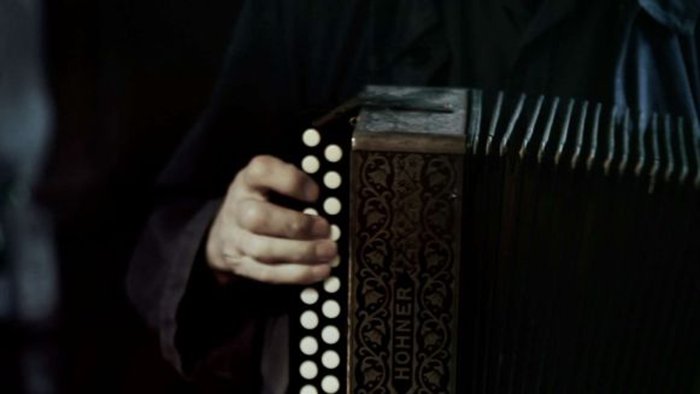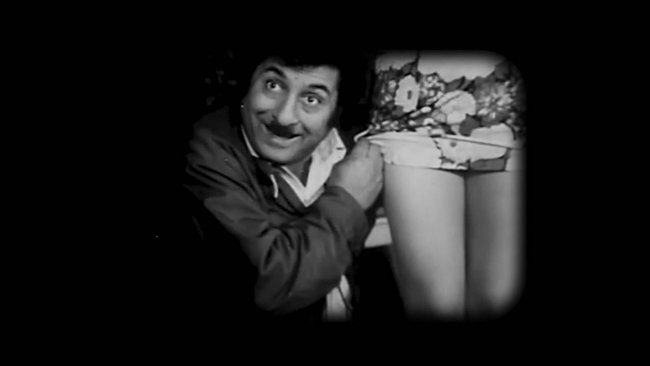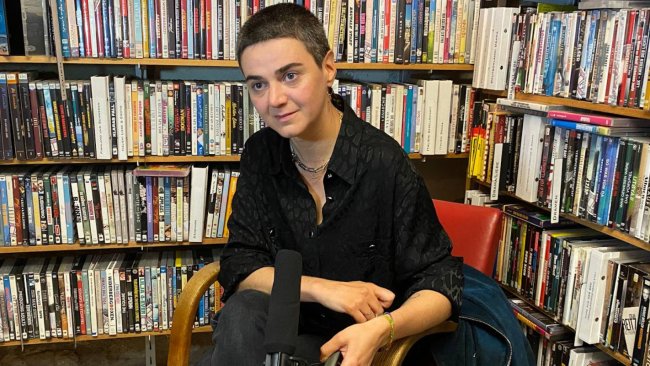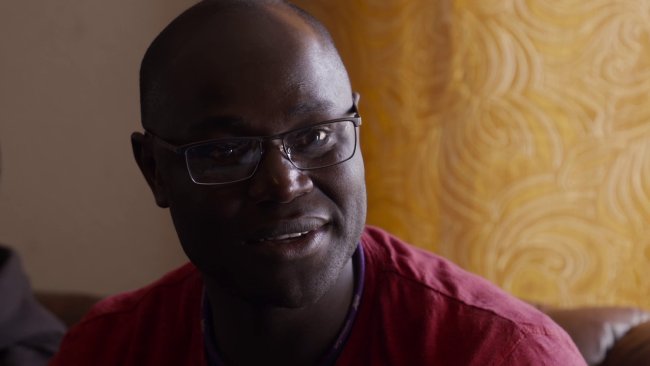I Had Nowhere to Go | Jonas Mekas
[…] The black screen is just the radicalization of a precise iconoclasm. A precise one, for the images are not absent at all, but in fact constantly present in Mekas’ words and in our imagination.
[…] Douglas Gordon focuses on Jonas Mekas’ prehistory and activity as an artist to tell us of his life; he chooses to enter the darkness of Mekas’ birthplace as an artist. A bombed birthplace, itself a place of displacement and exile, of destruction and wandering. But also a place of resistance and openness to life; a place of curiosity and research.
Here the Q&A with Jonas Mekas and Sergio Fant, at Locarno (2016).
Text: Giuseppe Di Salvatore | Audio/Video: Ruth Baettig
Memory seems not to be a question of images, but a question of words, both spoken written. For the projection of Douglas Gordon’s I Had Nowhere to Go we are mainly faced with a black screen. We hear Jonas Mekas’ voice telling his story, more specifically, the story of his forced exile between Lithuania, Germany and the United States; between his abandoned home, the Nazi German camps, and the refugee camps, in Germany and in the United States. Mekas’ diary concentrates on a span of approximately a dozen years after 1940 and it seems like a late vindication of his stolen youth.
The black screen is just the radicalization of a precise iconoclasm. A precise one, for the images are not absent at all, but in fact constantly present in Mekas’ words and in our imagination. The black screen negates only the exhibition of «surface» images – to use an expression of Mekas: it negates the Hollywoodian cinema where «all is visible», where there is no room for the unconscious or for dreaming, as Mekas himself tells us. Douglas Gordon’s choice is certainly austere, but also faithful to the rigor and the commitment of the artist as a researcher. Mekas’ life was and is dedicated to the exploration of images, in a creative process that cannot help but stem from the refusal of preconceived images and of reproducing images.
This creative process deliberately involves not only the images on the screen, but the screen itself, physically, as a medium for images and imagination. Through the black screen, Gordon uses the architecture of the cinema, putting us in a situation where our physical position assumes an important role. Aside from the rare evocative images of potatoes and chimpanzees (which are expressive of the experience of being a survivor or of a human reduced to his/her animality), Gordon literally bombs our senses with the sounds of war bombings and with sudden explosions of white screens. This violence shocks us and, at the same time, transmits the direct confrontation between wartime and the discovery of New York City, or the confrontation between slavery and freedom; both shocking experiences for the young Mekas. The wonderful sound design by Frank Kruse is definitely the main protagonist of Gordon’s film, binding the violence of sirens and explosions with the deformed music of piano and violin, the countryside with the urban life, the breath, the voice and the silence.
«I had nowhere to go», says Jonas Mekas, stressing his situation of being a “displaced” person; «once you leave home, you’re never at home». But he also says, with a sense of pride in his voice that it is equally a resistance, «I was a poet». And we cannot help but connect the condition of the displaced and the one of the poet: is not the poet’s home also the place of his displacement? Douglas Gordon focuses on Jonas Mekas’ prehistory and activity as an artist to tell us of his life; he chooses to go into the darkness of Mekas’ birthplace as an artist. A bombed birthplace, itself a place of displacement and exile, of destruction and wandering. But also a place of resistance and openness to life, of curiosity and research. In this way Gordon can penetrate the secret and condition of creativity, which is probably nothing but the experience of solitude: the resistance of the survivor, the void of having nowhere to go, the void of freedom.
In the last part of the film, we see fireflies playing with the moon, we see green foliage moved by the wind, we see Mekas playing the accordion, and finally singing. This “happy ending” shows the nice side of the tragedy of war experience, that is the side of resistance and freedom, the creative force stemming out of ruins and misery. I like to read this as a contemporary story; the story of the recent and present wars and displacements. Thus, I like to see this minimalist and rigorous film as an optimistic plea for creativity, a powerful example to find a positive notion coming out of the tragedy of violence and homelessness. Yes, because of the joyful and ironic nature of Jonas Mekas’ voice, it remains impressed in us as the very backbone of his dramatic storytelling.
Info
I Had Nowhere to Go | Film | Douglas Gordon | UK-DE 2016 | 100’ | Festival del film Locarno | Cineasti del presente
First published: August 11, 2016





